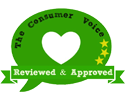VAT Flat Rate Scheme Rebate
If you are self employed and are not already VAT registered you could be owed a VAT rebate through the VAT flat rate scheme.
A VAT rebate can be claimed on assets bought for your business within the last four years.
Joining the VAT flat rate scheme can also help you pay less VAT in the future meaning you can keep more money in your business.
If your turnover hits £90,000, then you are legally obliged to register to pay VAT by the end of the following month – usually charged at 20%. Some goods and services are ‘VAT exempt’, 0%, and some are charged at 5% VAT.
Am I eligible for a VAT rebate?
You are eligible if you are:
- Self employed.
- Limited company contractor.
- Have a turnover below £150,000.
- Pay VAT on goods and services bought for your business.
- Have VAT receipts showing what you have bought.
What is the VAT flat rate scheme?
The VAT flat rate scheme was set up by the government over ten years ago. It allows for a business to pay VAT at a lower rate meaning you get to keep the difference between what VAT you have paid and what the VAT flat rate scheme allows.
VAT flat rate scheme 1% bonus
In the first year of being part of the VAT FRS you get an extra 1% off your flat rate which will increase what you are owed back.
What can I claim for as part of a VAT rebate?
Under the VAT flat rate scheme you can claim for assets worth £2000 including VAT or more.
If you have not been registered for VAT before you can claim back for allowable assets bought within the last four years in your first VAT return (even if they are worth less than £2000 including VAT).
Being in the FRS means you don’t reclaim VAT on your purchases. The only exception is if you purchase an an asset which is worth £2000 or more.
The scheme aims to keep things simple with the difference between the standard rate of VAT and flat rate for your industry being claimed.
If there is personal and business dual purpose to the item, then you can claim the percentage that is proportional to its business usage.
For example, if you use a vehicle for work 60% of the time and personal usage the other 40%, then you can claim 60% of the VAT. Business owners are not always aware that it is also possible to make a VAT claim for fuel and business vehicles; new, leased, commercial and self-drive hire.
My turnover isn’t high enough to be VAT registered
You have to become VAT registered if your turnover hits £90,000. If your turnover is below the threshold you can voluntarily register for VAT meaning you can take advantage of the VAT flat rate scheme.
For example, the flat rate VAT scheme allows a business to continue to charge VAT at 20%, but pay VAT at a lower rate (there are variable rates, depending on the type of business). So, you pay less VAT than you charge and keep the difference in your business.
What things are not included in a VAT rebate claim?
There are several things that you cannot claim for, for example: items purchased from other EU countries, items that are solely for private use and ‘business entertainment’ expenses.
This is not an exhaustive list and it is important that any claims are checked for accuracy before submission.
Can a VAT rebate be backdated?
Yes, for up to 4 years from the date of registration (not tax years). You can claim any assets still on hand purchased in the last 4 years – but at the depreciated value as at registration date where the value of the asset at the registration date (including the VAT ) is equal to or over £2K.
What records do I need to make a VAT rebate claim?
You need to keep clear, organised records of all sales and purchases, copies of VAT invoices and receipts – amongst other things.
You also need to have a VAT account. HMRC are entitled to inspect any business at any time and, if your record keeping is not up to scratch, there are considerable penalties to be paid.
You then use your business information to submit a VAT rebate claim as part of your VAT return.
Can I opt out of the VAT FRS?
Yes, but you have to let HMRC know in writing, so allow for some correspondence time. You can deregister your business for VAT completely or change the type of VAT scheme your business uses.
Is the FRS the best option for all self-employed businesses?
No, not necessarily. For example, if your sales are mostly tax exempt, then you would normally end up paying more VAT if you joined the FRS.
It’s important that you get expert advice from your accountant or tax advisor when you are deciding on the most VAT efficient scheme for your business.
How does a VAT refund affect my annual self assessment tax return?
You just include the amount of your VAT rebate on your self-assessment tax return. Any “rebate” which would be as a result of capital assets isn’t taxable. What is taxable is the difference between the 20% VAT charged and the percentage of VAT paid over.
How do I claim a VAT rebate through the flat rate scheme?
Typically, the VAT a business remits or reclaims from HM Revenue and Customs (HMRC) represents the balance between the VAT it collects from customers and the VAT it incurs on its purchases.You retain the difference between what you bill your clients and what you remit to HMRC.
Under the flat rate scheme, you are unable to reclaim any VAT paid on purchases, except when acquiring a capital asset worth £2,000 or more inclusive of VAT.
If you are entitled to a refund of VAT it will be calculated on and repaid after HMRC receives and processes your VAT return online.
Further VAT FRS information:






